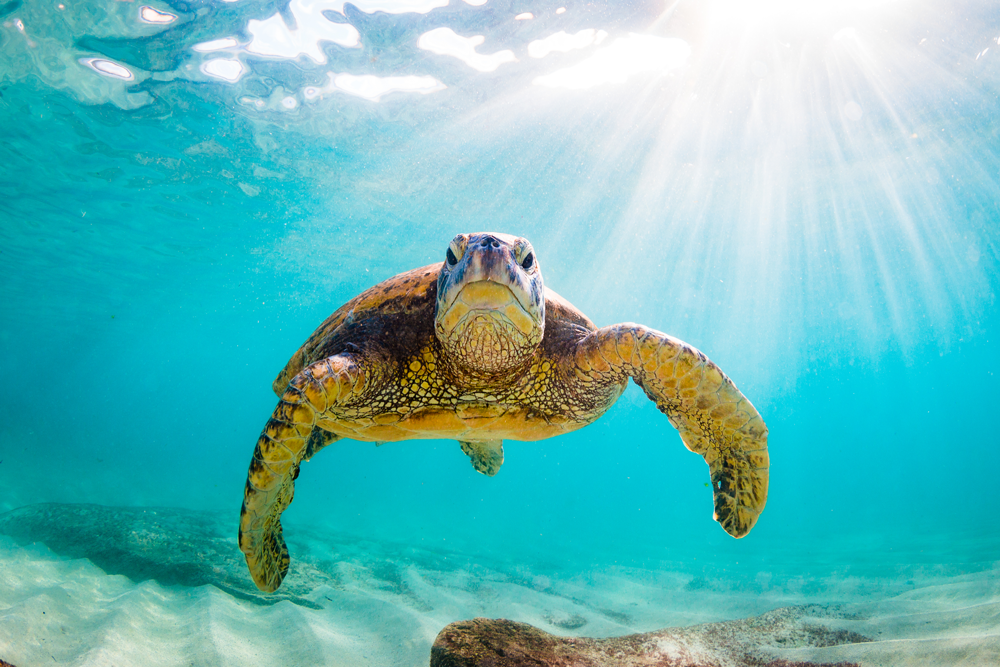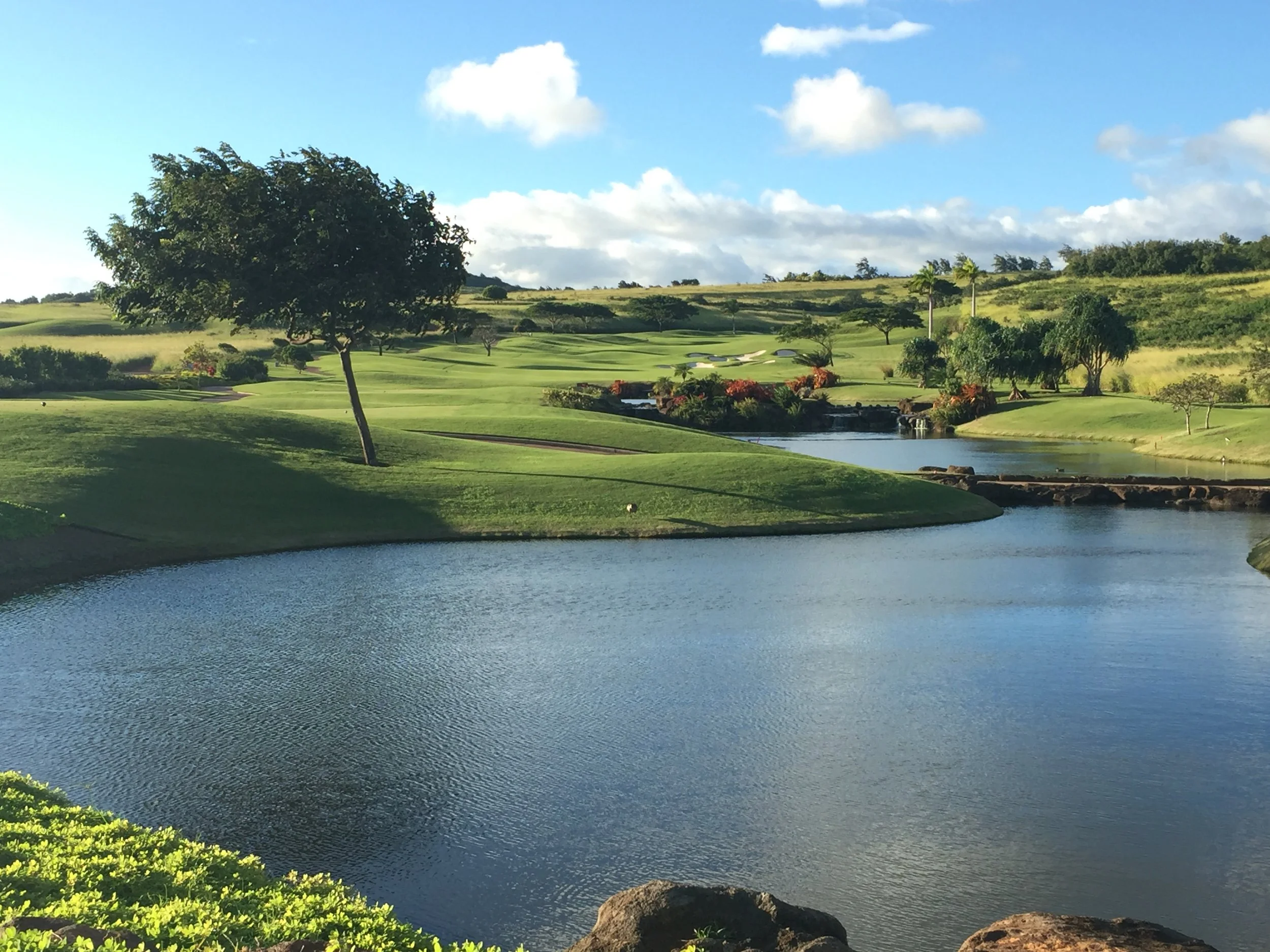4 - Wildlife Protection

Hawai’i golf courses often provide critical habitats for native species.
According to the Audubon Society, Hawaiʻi is home to a critically endangered community of native bird species found nowhere else on earth. Its flora and fauna face conservation challenges magnified by the fragility of the islands' unique ecosystems, evolved in isolation over millions of years. Habitat destruction and introduced animal species and disease have greatly impacted many native birds over the past few centuries. More than half of Hawaiʻi's endemic bird species have become extinct, while the majority of those remaining are listed under the U.S. Endangered Species Act. Many native bird species now find refuge only in high-elevation forests. Golf courses often provide critical habitats for these avian species.
LANDSCAPE
The ideal plant from an environmental stand point is the one nature and evolution placed there. It has adapted specifically to the soil, microclimate, rainfall and light patterns, insects and other pests, and endemic nutrient levels over thousands of years. As humans, we often have a need to change the natural landscape for living, working, and recreation. When we do so, our challenge is to use the most suitable plant materials for the new conditions that meet our design needs. The goal of BMPs is to maintain as close to a natural ecosystem as practical, while meeting the needs of the course.
Research
One of the first steps in golf course landscape planning is to assess the site’s general environment and ecology. Map any environmentally sensitive areas such as sink holes, lava tubes, wetlands, anchialine ponds, or flood zone areas, and identify federal and state endangered or threatened species. It is important to preserve natural surroundings and wildlife habitats.
Contact the local fish and wildlife service or the Hawaiʻi Audubon Society to determine if your property is home to, or provides potential habitat for, endangered species. Develop a written management plan to protect and manage core (and supporting) wetland habitats in order to maximize productivity and survival of endangered waterbirds. Understand factors limiting Hawaiian waterbird population numbers, refine recovery objectives, and improve management techniques. Consider implementing a predator trapping program in conjunction with the local Humane Society and contact the Department of Health’s Vector Control to remove mongoose and feral animals that endanger protected species.
WILDLIFE HABITAT
Protecting wildlife habitat on golf courses is especially important in urban environments where highly fragmented forested areas often provide the best, and sometimes the only, habitat for many wildlife species. Landscape, design, and upkeep are critical components for protecting and encouraging habitat.
Forested buffers along golf course streams and wetland areas can provide sanctuaries for birds and other wildlife, while protecting water quality. When riparian buffers connect isolated blocks of habitat, they also serve as important travel corridors for species that may not cross large open areas.
Natural vegetation should be retained and enhanced through supplemental planting of native trees, shrubs, and grasses in non-play areas. Avoid exotic species, particularly invasive plants, or plants that are not well adapted to the local environment. The primary wildlife will probably be small mammals and birds. Natural cover around a course also serves as a buffer to reduce urban traffic noise and visual distractions, and filters pesticides and nutrients from runoff entering streams or ponds.
SOURCE: Kohanaiki Golf Club
Well-designed forested buffers should contain a mixture of fast and slow growing native trees, shrubs, and grasses to provide a diverse habitat. By leaving dead trees and supporting “no-mow” and native grass areas, the amount of labor and resources needed to maintain a course are reduced. These practices also:
Provide ability to trap and remove upland sources of sediment, nutrients, and chemicals
Protect fish and wildlife by supplying food, cover, and shade
Maintain a healthy riparian ecosystem
Remove or restrict feral ungulates that reduce native plant vitality and variability
EDUCATION
Train your crew on identifying endangered species and educate members and guests through newsletters, meetings, and signage. Section off habitat areas so that nesting birds are left undisturbed. Plan and implement a public awareness program to increase landowner and land manager knowledge of waterbird needs and public support for waterbird recovery. Reference Planning, Design, and Construction and Irrigation sections for additional BMPs.










